The largest university campuses in India by area are G.B. Pant University of Agriculture and Technology, BHU, Punjab Agricultural University and more. They offer best-in-class infrastructure and spatial advantage, allowing the holistic development of students.
Table of Contents
G.B. Pant University, Chaudhary Charan Singh Haryana Agricultural University, Osmania University, Bangalore University, University of Hyderabad, Govind Ballabh Pant University of Agriculture, etc are some of the biggest university in India. The area of these campuses expands to around 2,300-12,611 acres and above. The vast campus area signifies best-in-class infrastructure and an opportunity for intellectual group discussions.
It also opens doors to various extracurricular activities, allowing holistic growth of students through a dynamic learning environment. In this article, we will explore the top 10 largest university campuses in India by area, highlighting the institutions that stand out not just in education but also in physical expanse and campus life.
List of Top 10 Largest University Campuses in India by Area
A big campus, attractive infrastructure, advanced facilities, best-in-class technologies, etc. are some of the parameters that you must take into consideration when choosing a college for yourself.
Large university campuses look attractive and provide an abundance of facilities through large spaces for various extracurricular activities, seminars, workshops, etc. A list of the biggest campus in India by Area is given below:
| Name of University | Area (Acres) | Location |
| G.B. Pant University of Agriculture and Technology | 12,611 | Pantnagar, Uttarakhand |
| Chaudhary Charan Singh Haryana Agricultural University | 8,645 | Hisar, Haryana |
| Banaras Hindu University | 4,000 | Varanasi, Uttar Pradesh |
| University of Hyderabad | 2,300 | Hyderabad, Telangana |
| Osmania University | 1600 | Hyderabad, Telangana |
| Punjab Agricultural University | 1,510 | Ludhiana, Punjab |
| North-Eastern Hill University | 1,225 | Shillong, Meghalaya |
| Aligarh Muslim University | 1,155 | Aligarh, Uttar Pradesh |
| Bangalore University | 1,100 | Bengaluru, Karnataka |
| Jawaharlal Nehru University | 1,020 | New Delhi |
1. G.B. Pant University, Uttarakhand - 12,611 Acres

The Govind Ballabh Pant University of Agriculture is the largest university campuses in India by area. It was established due to the Act of the State Legislature of Uttar Pradesh (XI-V of 1958) on 17 November 1960 at Terai Region in UP by Pt. Jawaharlal Nehru.
In 1949, the first Education Commission of India was set up, and decisions were taken to set up rural universities in India. With the help of the University of Illinois, which is located in the USA, the university was established.
- Facilities: Research centres, tended fields, housing colonies, hospitals, marketing centres, primary and secondary schools, etc.
- Courses Offered: B.Sc, M.Sc, B.Tech, M.Tech, MBA, Ph.D in Agriculture, Veterinary Sciences, Fisheries, Horticulture, Forestry, etc.
- Average Annual Fees: INR 25,000 - INR 50,000
- NIRF Ranking: 8th in the Agriculture and Allied Sector; 88th in the University Category; and 38th in the State Public University Category.
2. Chaudhary Charan Singh Haryana Agricultural University, Haryana - 8645 Acres

Chaudhary Charan Singh Haryana Agricultural University, established in 1970, is an Agricultural University run by public funding and located in Hisar, Haryana. The university is affiliated with the Indian Council of Agricultural Research (ICAR), the Association of Indian Universities (AIU), and the University Grants Commission (UGC).
Chaudhary Charan Singh Haryana Agricultural University is one of the largest university campuses in India by area, offering Undergraduate, Postgraduate and Doctorate programs. It tends to improve the effects of habitat professions in enriching the lives of humans in India's villages, towns and cities through education, studies, and other activities.
- Infrastructure Facilities: Library, Auditorium, Medical Facilities, Hostels, Guest House, Cafeteria, Gym, etc.
- Courses offered: B.Sc, M.Sc, B.Tech, M.Tech, MBA, Ph.D in Agriculture, Home Science, Animal Sciences, Engineering, Food Technology, etc.
- Average Annual Fees: INR 20,000 - INR 60,000
- NIRF Ranking: 7th in the Agriculture and Allied Sector; 101 - 150 band in the University Category; and 48th in the State Public University Category.
3. Banaras Hindu University, Uttar Pradesh - 4000 Acres
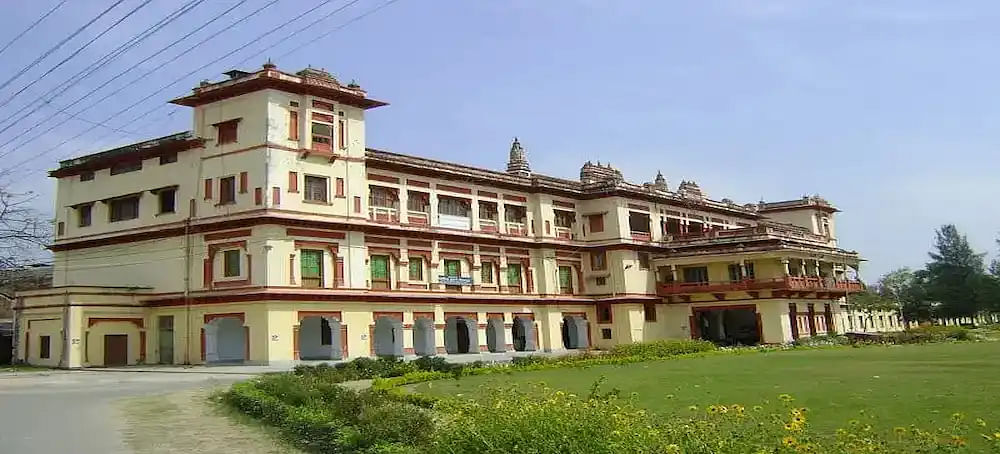
Banaras Hindu University (BHU) is another public central university located in Varanasi, Uttar Pradesh with the largest university campuses in India by area. It was established by Madan Mohan Malaviya and Annie Besant in 1916. It is also one of the largest residential universities in Asia, with a population of 30,000 students.
It offers students with Undergraduate, Postgraduate, PhD, and Diploma courses or degrees. The university has been accredited by NAAC 'A' Grade and is approved by the Union Grants Commission (UGC).
- Infrastructure Facilities: Laboratories, Seminar Hall, Classrooms, Playground, etc.
- Courses Offered: BA, B.Com, B.Sc, B.Tech, B.Ed, BAMS, MBBS, M.Sc, M.Tech, MBA, PhD in various disciplines like Arts, Science, Engineering, Medicine, Law, and Management
- Average Annual Fees: INR 4,000 - INR 1.00 Lakh
- NIRF Ranking: 5th in the University Category, 11th in the Overall Category; and 8th in the Medical Category.
Also Read: Top 10 MBA in HR Colleges in India: Check Fees, Exams and Placement Details
4. University of Hyderabad, Telangana - 2300 Acres

The University of Hyderabad, located in Hyderabad, Telangana, Hyderabad is a Public Research University founded in 1974. It was established under The Six-Point formula of 1973, a political settlement between the Government of India and many regions belonging to Andhra Pradesh.
The university has been accredited by NAAC 'A' Grade and is approved by the Union Grants Commission (UGC) and All India Council for Technical Education (AICTE). Further, the university offers students with Postgraduate, M.Phil and PhD programs.
- Infrastructure Facilities: Library, Cafeteria, Hostel, Gym, Auditorium, Labs.
- Courses Offered: BA, MA, B.Sc, M.Sc, B.Tech, M.Tech, MCA, MBA, M.Phil, PhD in Sciences, Social Sciences, Humanities, Management, Engineering, etc.
- Average Annual Fees: INR 5,000 - INR 80,000
- NIRF Ranking: 17th in the University Category; 25th in the Overall Category; and 70th in the Engineering Category.
5. Osmania University - 1,600 Acres
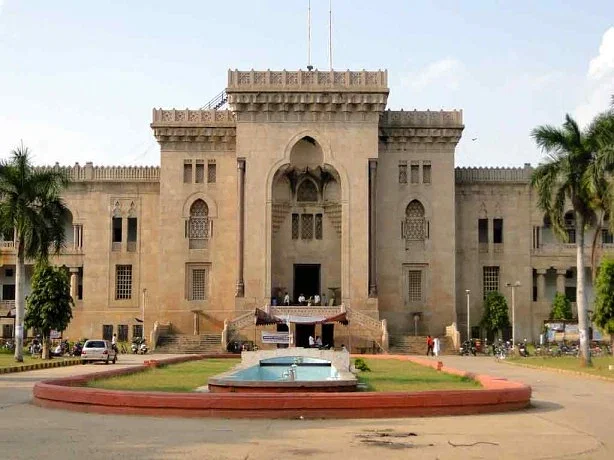
Established in 1918, Osmania University (OU) is another public state university recognized by the UGC and accredited with an "A+" grade by the NAAC. It is India's seventh-oldest university and the second-oldest in South India.
Osmania University provides undergraduate, postgraduate, and doctorate programs in a variety of fields, including science, humanities, business, education, pharmacy, engineering, law, and more.
- Infrastructure Facilities: Guest house, post office, auditorium, health centre with a medical officer and separate residential facilities for both male and female students.
- Courses Offered: BA, B.Com, B.Sc, B.Tech, M.Sc, M.Com, MBA, MCA, LLB, PhD in Arts, Commerce, Science, Engineering, Law, Management, etc.
- Average Annual Fees: INR 10,000 - INR 75,000
- NIRF Ranking: 6th in the State Public University Category; and 70th in the Overall Category.
6. Punjab Agricultural University, Punjab - 1,510 Acres

Next, on the list of the top 10 largest university campuses in India by area is the Punjab Agricultural University. It is a state agricultural university formally inaugurated in 1962 by ex-Prime minister Pandit Jawaharlal Nehru and is located in Ludhiana, Punjab.
This university has an international reputation for excellence in agriculture, and it has also been a pioneer in the Green Revolution in India. It is the first state agricultural university (SAU) in India in terms of studies, education, and extension.
The university is also known as the "Mother of Green Revolution". Further, it offers students with Diploma, Undergraduate, Postgraduate and Doctorate programs.
- Infrastructure Facilities: Library, Auditorium, Medical Facilities, Cafeteria, Hostels, Seminar Hall, Gym, etc.
- Courses Offered: B.Sc, M.Sc, B.Tech, M.Tech, MBA, Ph.D in Agriculture, Veterinary Sciences, Food Technology, Engineering, Biotechnology, etc.
- Average Annual Fees: INR 40,000 - INR 90,000
- NIRF Ranking: 3rd in the Agriculture and Allied Sectors; and 80th in the Overall Category.
Also Read: Top 10 Fashion Designing Colleges in India 2025, Eligibility, Fees
7. North-Eastern Hill University - 1,225 Acres

North-Eastern Hill University, abbreviated as NEHU, was established on 19 July 1973, as a Central University. It acted as a regional university for North East India, including Meghalaya, Nagaland Arunachal Pradesh, and Mizoram.
The North-Eastern Hill University is accredited by the National Assessment and Accreditation Council (NAAC), and Bar Council of India (BCI) and is recognized by the University Grants Commission (UGC). The university offers Undergraduate, Postgraduate, PG Diploma, and Doctorate programs to the students.
- Infrastructure Facilities: Library, Medical Facilities, Hostels, Computer Centre, Auditorium, Sports Facility, etc.
- Courses Offered: BA, B.Sc, MA, M.Sc, B.Tech, M.Tech, MBA, PhD in Humanities, Science, Technology, Social Sciences, etc.
- Average Annual Fees: INR 5,000 - INR 40,000
- NIRF Ranking: 151 - 200 Band in the Overall Category
8. Aligarh Muslim University, Uttar Pradesh - 1,155 Acres
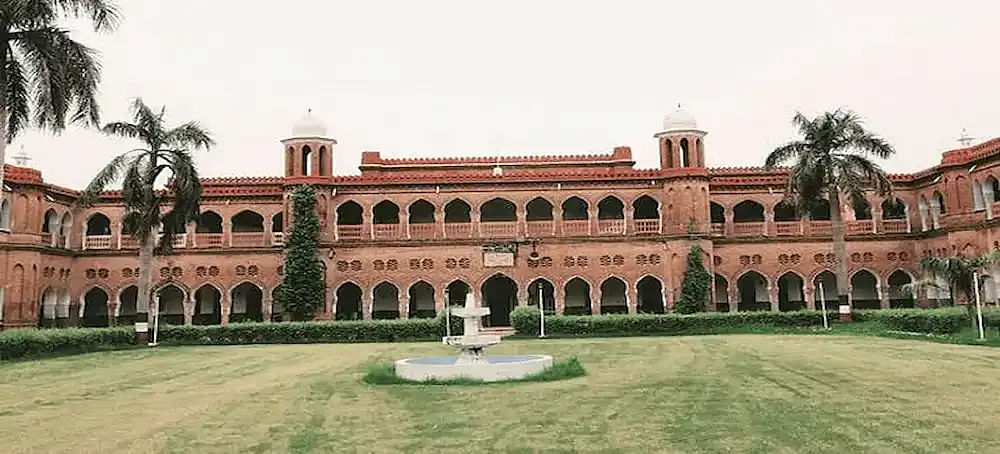
Aligarh Muslim University is a public central university originally established by Sir Syed Ahmad Khan as Mohammedan Anglo-Oriental College in 1875. Later became Aligarh Muslim University in 1920 and consisted of one main campus and three off-campus centres across India.
The AMU provides students with Undergraduate, Postgraduate, and Doctoral programs and is affiliated with the Association of Indian Universities (AIU), and the Union Grants Commission (UGC).
- Infrastructure Facilities: Library, Laboratories, Sports facilities, Hostel, Gym, etc.
- Courses Offered: BA, B.Sc, B.Tech, M.Tech, MBA, MBBS, BDS, M.Phil, PhD in Arts, Sciences, Engineering, Medicine, Social Sciences, Law, etc.
- Average Annual Fees: INR 7,000 - INR 50,000
- NIRF Ranking: 8th in the University Category; and 16th in the Overall Category
9. Bangalore University, Bangalore - 1,100 Acres

Bangalore University has one of the largest university campuses in India by acres. It is a state-owned public university located in Bengaluru, Karnataka. The university is part of many organizations like the Association of Indian Universities (AIU), Association of Commonwealth Universities ( ACU) and affiliated with the Union Grants Commission and accredited with Grade A by NAAC.
The university accepts various state and national-level entrance examinations, such as KCET, Karnataka PGCET, GATE, and UGC NET/ CSIR NET for admission into various programs. It offers students with Undergraduate, Postgraduate, Diploma, and PG Diploma courses.
- Infrastructure Facilities: Library, laboratories, Sports facilities, Hostel, Swimming Pool
- Courses Offered: BA, B.Sc, B.Com, BBA, MBA, M.Sc, M.Tech, LLB, PhD in Arts, Science, Commerce, Law, Management, Engineering, etc
- Average Annual Fees: INR 10,000 - INR 80,000
- NIRF Ranking: 101 - 150 Band in the Overall Category
10. Jawaharlal Nehru University, New Delhi - 1020 Acres
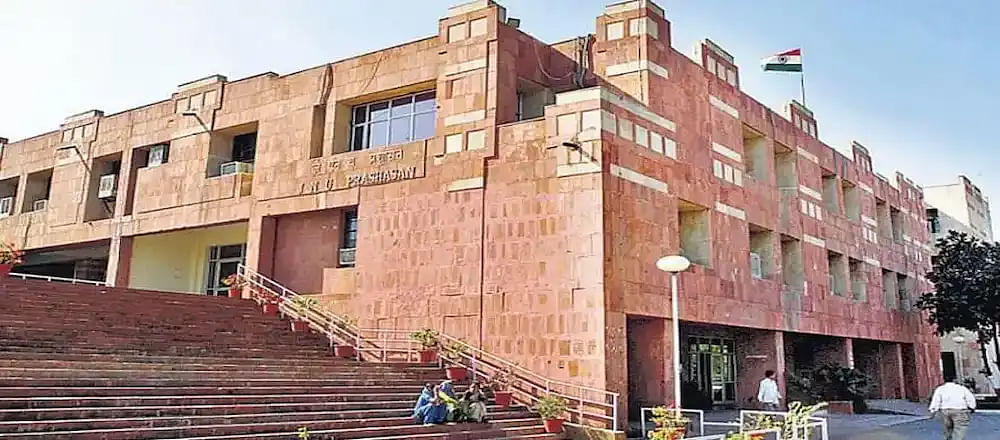
Jawaharlal Nehru University is 10th out of the top largest university campuses in India by area. It is a public university named after the first Prime Minister of India, was established in 1969 and is located in Delhi.
The university is well renowned for its teaching and research faculties. The university is accredited with the National Assessment and Accreditation Council (NAAC), and the University Grants Commission (UGC).
- Infrastructure Facilities: Library, Auditorium, Medical Facilities, Hostels, Guest House, Sports Facility, etc.
- Courses Offered: BA, MA, M.Sc, M.Tech, MBA, M.Phil, PhD in Humanities, Social Sciences, Science, Technology, Management, etc.
- Average Annual Fees: INR 2,000 - INR 50,000
- NIRF Ranking: 10th in the Overall Category; and 2nd in the University Category
Other Universities With Biggest College Campuses in India
Large university campuses often offer many advantages over smaller ones. Here is a list of biggest university by area in India which you might prefer over a smaller ones:
- Sam Higginbottom Institute of Agriculture, Technology and Sciences / Allahabad Agriculture Institute
- Mizoram University
- Tamil University
- Guru Ghasidas University
- Shivaji University
- Banasthali Vidyapith
Advantages of Having Large Campus Universities
Largest university campuses in India often offer many advantages over smaller ones. Here is a list of reasons why you might prefer the universities by biggest campus in India by area over a smaller one.
- Larger campuses indicate a wide variety of majors and courses available in that college.
- Well-stocked libraries can only be found when space necessary for their existence is available, as is often the case with big-name universities.
- A variety of housing opportunities can be found on large campuses, with dorm houses, hostels, clubs, shops, etc.
- Well-funded sports programs need a well-kept and large sports ground.
- A wide range of academic and student activities can be conducted on large campuses, while small campuses must always struggle with a lack of space to put their creativity into action.
Also Read: Top 10 Open Universities in India 2025
Studying at the largest university campus by area in India 2025 can help you leverage lavish campus facilities, updated infrastructure, area to organise large-scale events and more. The list of largest universities in India by area can provide you an idea of which university to choose.





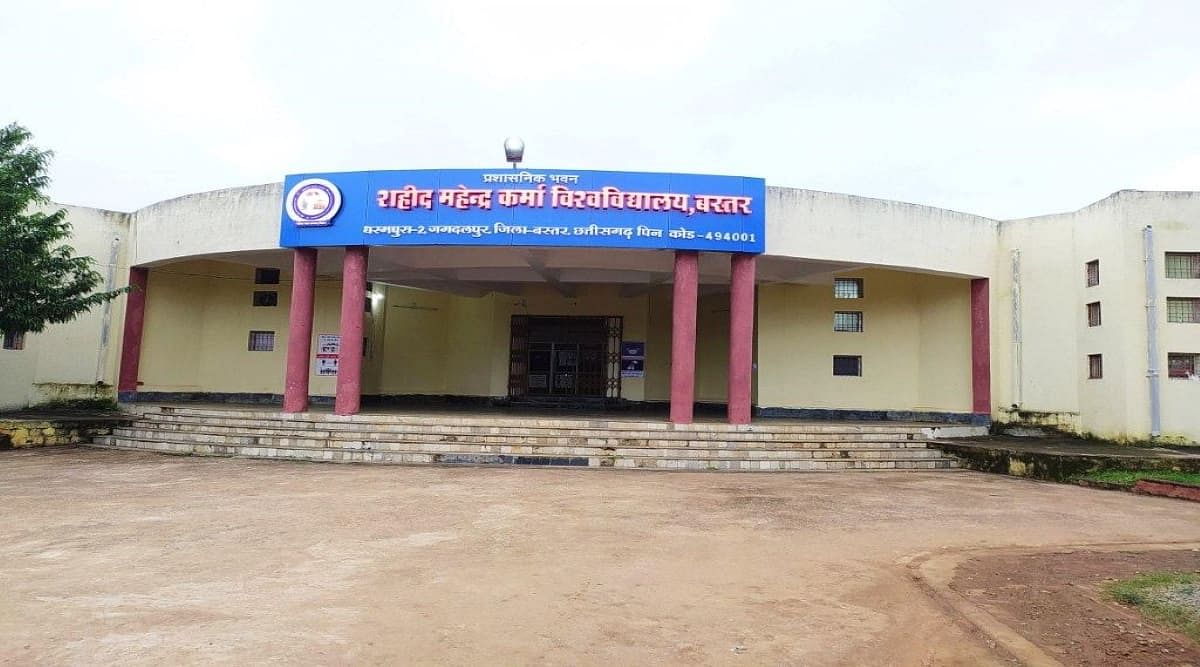


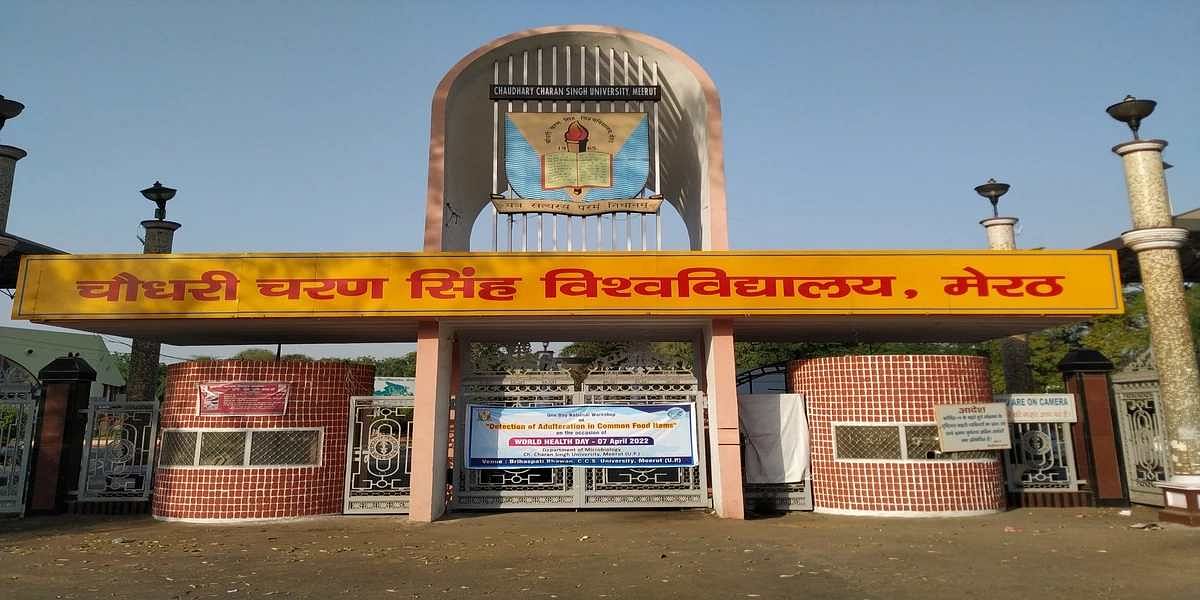





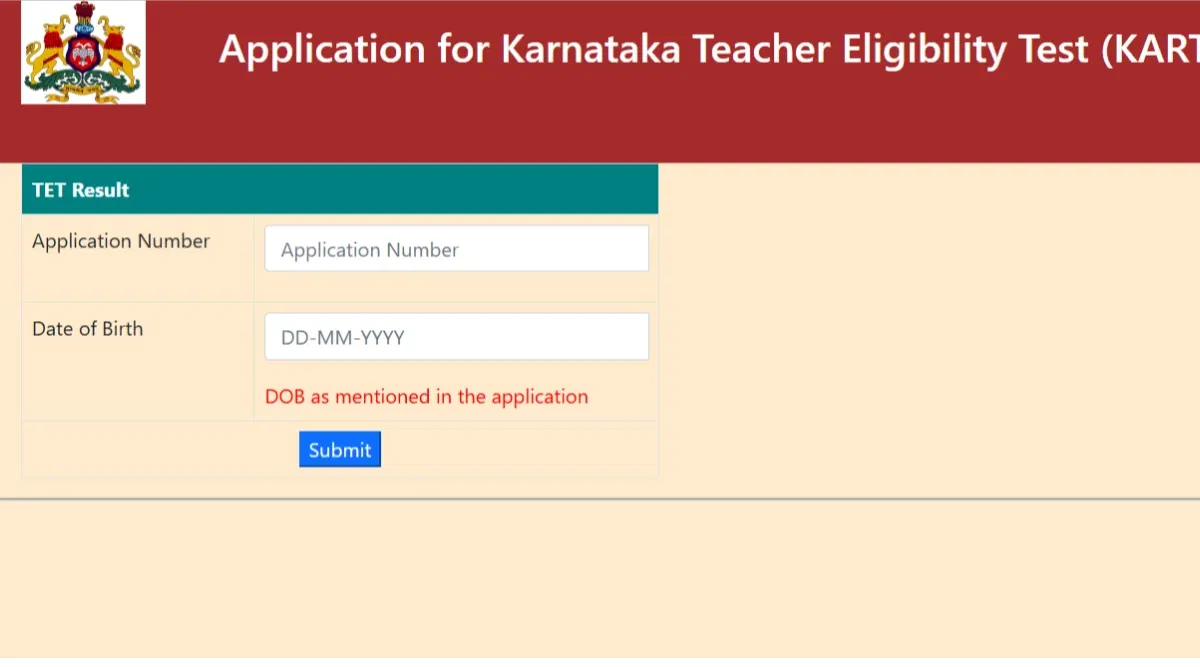








POST YOUR COMMENT